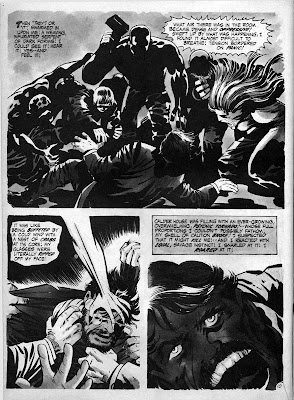'Heavy Metal' magazine June 1982
It's June, 1982. And my family has just subscribed to 'expanded' cable, which not only means we now have an extravagant 30+ channels to view, but one of them is this newer channel called 'music television', or 'MTV'.
MTV has been broadcasting for about a year, but only in the Spring of 1982 has it begun to grow in viewership and influence. My brothers and sisters and I are immediate fans of MTV, avidly watching it for hours each day, tolerating the crappy videos because, after all, you're only a few minutes away from the possibility of a better one commencing.
Among the large number of UK-supplied videos in continuous rotation in those early days, I remember seeing this video from the British group The Members: 'Working Girl'. Early-eighties New Wave fashions and hair styles at their finest !
The June, 1982 issue of Heavy Metal magazine is out and on the stands, with a front cover by Page Wood titled 'A Girl and Her Dog', with a back cover by Tony Roberts titled 'Isn't She Lovely ?'
There are some full-page adverts for what are now classic SF films: The Thing, and The Road Warrior.
This issue features yet more installments of Corben's 'Den II', 'Incal Light', by Jodorowsky, Chaland, and Moebius; 'At the Middle of Cymbiola', by Renard and Schuiten, and 'Nova 2' by Garcia. Portfolios include a look at the forthcoming Ridley Scott film Bladerunner, and 'H. R. Giger's New York'.There are some full-page adverts for what are now classic SF films: The Thing, and The Road Warrior.
The Dossier features 'Rok' Critic Lou Stathis ripping bands like Quarterflash and The GoGos for being superficial and unhip; homages to film noir; an overview of men's adventure novels (The Destroyer, Mack Bolan, etc.); and tepid reviews of StarTrek 2: Wrath of Khan and Grease 2.
The June issue also features the next installment of Christin and Bilal's 'The Voyage of Those Forgotten', which I've posted below.


































































.jpg)




















